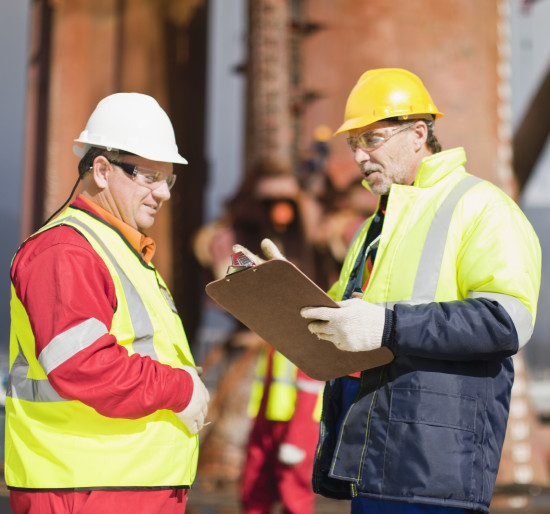HSE doubles down on human factors
Aerospace, Renewables, Environmental, Harbours & ports, Maritime, Oil & gas, TransportIn the words of The Health and Safety Executive, “if you think safety's expensive, try having an accident”. Which is why it’s not surprising to see the HSE doubling down on human factors.
The UK’s national regulator for workplace health and safety is asking for more evidence and digging deeper into how organisations are tackling the part human actions (or inaction) play in maintaining a safe workplace.

Analysis of accidents and incidents shows that human failure contributes to almost all accidents. Many major accidents - such as Piper Alpha, Texas City and Chernobyl - were initiated by human failure.
Which is why it’s not surprising to see the HSE doubling down on human factors.
The UK’s national regulator for workplace health and safety is asking for more evidence and digging deeper into how organisations are tackling the part human actions (or inaction) play in maintaining a safe workplace.
Indeed, two requests for assistance on this topic landed on Marex’s desk recently within a week of each other.

Broader scope
The UK HSE is one of the pioneers among global regulators to use a rounded approach to risk which includes a focus on human factors.
This aligns with the overall expectation from duty holders in the UK to use a goal-setting approach towards risk management, rather than imposing a prescriptive regime on the duty holders.
In their work, the HSE considers three aspects of human factors: the job, the individual and the organisation. In other words, human factors is concerned with what people are being asked to do (the task and its characteristics), who is doing it (the individual and their competence) and where they are working (the organisation and its attributes).
They acknowledge that human factors interventions will not be effective if they consider the three aspects - the job, the individual and the organisation - in isolation.
The scope of what they mean by human factors includes organisational systems and is considerably broader than traditional views of human factors and ergonomics. Human factors can, and should, be included within a good safety management system and so can be examined in a similar way to any other risk control system.
Examples given by the HSE of how human factors can affect safety and efficiency include:
- If someone needs to exert a large proportion of their strength to complete a task they are more likely to suffer injury and carry out the task inefficiently – possibly causing damage to the product and tools
- Or if the mental demands of a task are too high, perhaps involving diagnosing faults under significant time pressures, then there can be both a health issue for the employee but also a quality, and possibly safety issue for the production line, process and plant
- Or the opposite: maybe individuals have very limited scope for determining how to do their job and then they may lack motivation and job satisfaction and be less effective at work
Marex methodology
Now, we know that successful businesses achieve high productivity and quality while ensuring health and safety.
You can achieve these goals by combining good technology with the best work systems. And the best work systems are based on having a skilled workforce, with well-designed jobs that are appropriate to individuals’ abilities.
We have developed a methodology at Marex that supports clients in integrating human factors into particular projects to ensure good technology is backed by a good safety management system.
And like most things, it’s best to start early. The most efficient way to consider the impacts of the interaction between humans and systems is when you’re in the early stages of your project development.

When approached at the right stage, we are able to work closely with clients and engineering contractors to carry out HFE screening and design analysis so it’s “built in” to the whole process. This avoids expensive retro-fitting and can have a positive impact on life cycle costs of operations and maintenance.
But what about existing setups?
It is never too late to make improvements and minimise the potential for human errors, or mitigate the consequences of any human failures.
We have carried out human factors integration projects on offshore installations that are more than three decades old. With our pragmatic approach, we have been able to make recommendations for improvements which take into account the current stage of the asset’s lifecycle.
We have also assisted our clients with stop-gap solutions until some of the proposed engineering solutions can be planned and executed.
Fit for people
We all know that individuals have a wide range of abilities and also limitations.
Taking a human factors approach focuses on how to make the best use of these capabilities: by designing jobs and equipment which are fit for people. This not only improves their health and safety but often ensures a better managed, more effective organisation.
If you want to know more about the HSE’s position on human factors, you can take a look at the toolkit HSE inspectors use to support the consideration of human factors in site inspections, accident investigations and assessment of company documentation.
- https://www.hse.gov.uk/humanfactors










